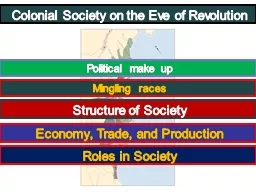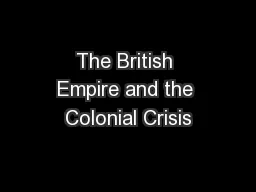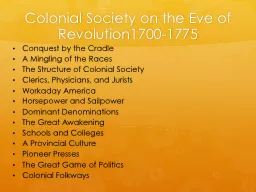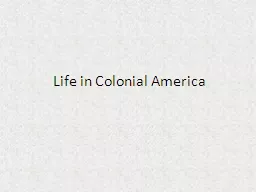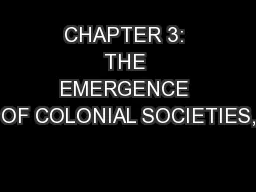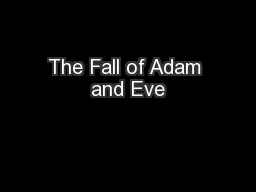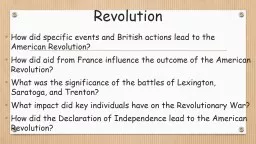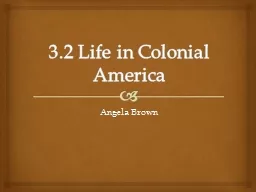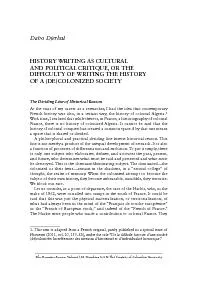PPT-Colonial Society on the Eve of Revolution
Author : ellena-manuel | Published Date : 2016-05-25
Political make up Mingling races Structure of Society Wretched Bachelors are disenfranchised by VA Assembly in 1670 Economy Trade and Production Roles in Society
Presentation Embed Code
Download Presentation
Download Presentation The PPT/PDF document "Colonial Society on the Eve of Revolutio..." is the property of its rightful owner. Permission is granted to download and print the materials on this website for personal, non-commercial use only, and to display it on your personal computer provided you do not modify the materials and that you retain all copyright notices contained in the materials. By downloading content from our website, you accept the terms of this agreement.
Colonial Society on the Eve of Revolution: Transcript
Download Rules Of Document
"Colonial Society on the Eve of Revolution"The content belongs to its owner. You may download and print it for personal use, without modification, and keep all copyright notices. By downloading, you agree to these terms.
Related Documents

